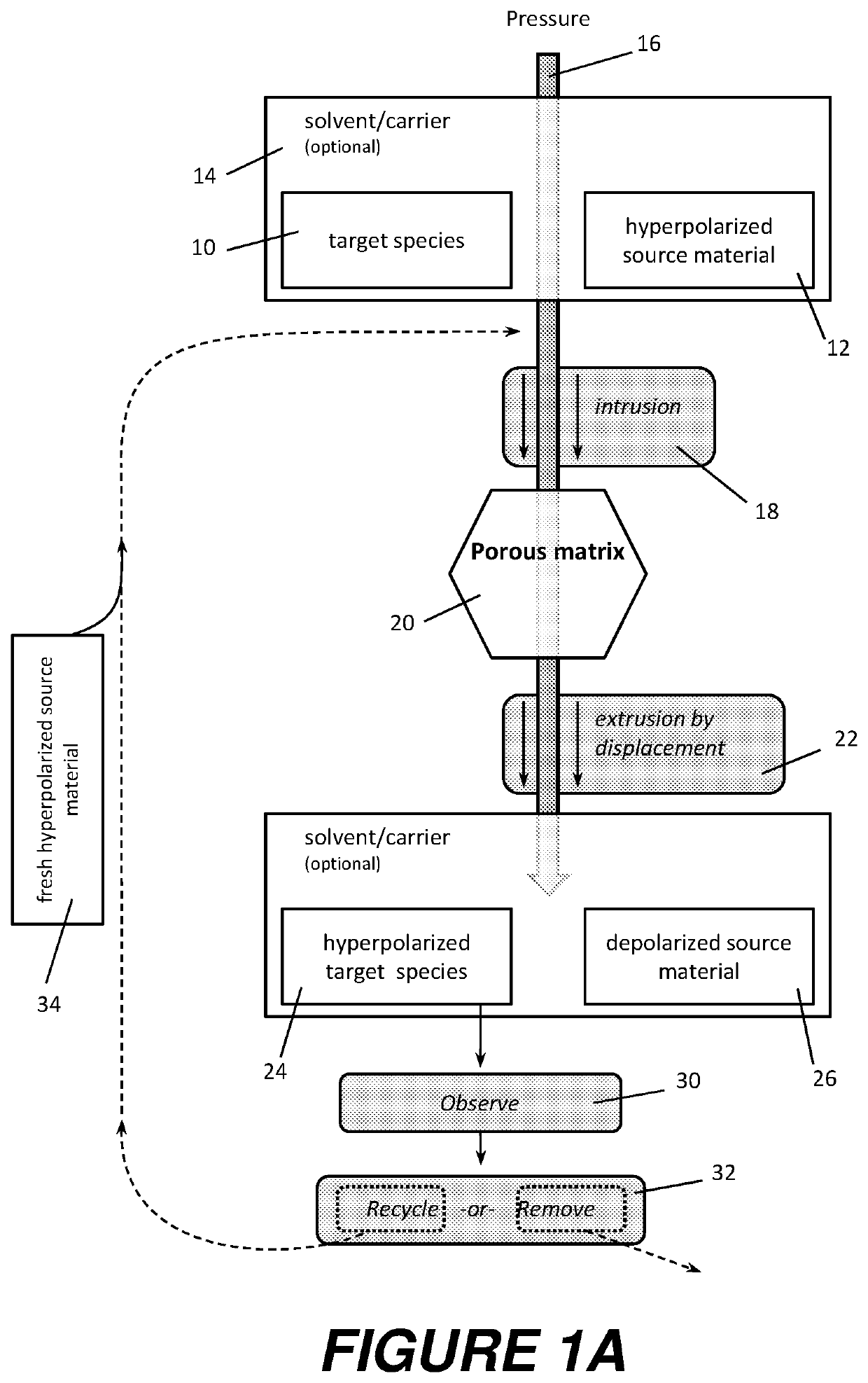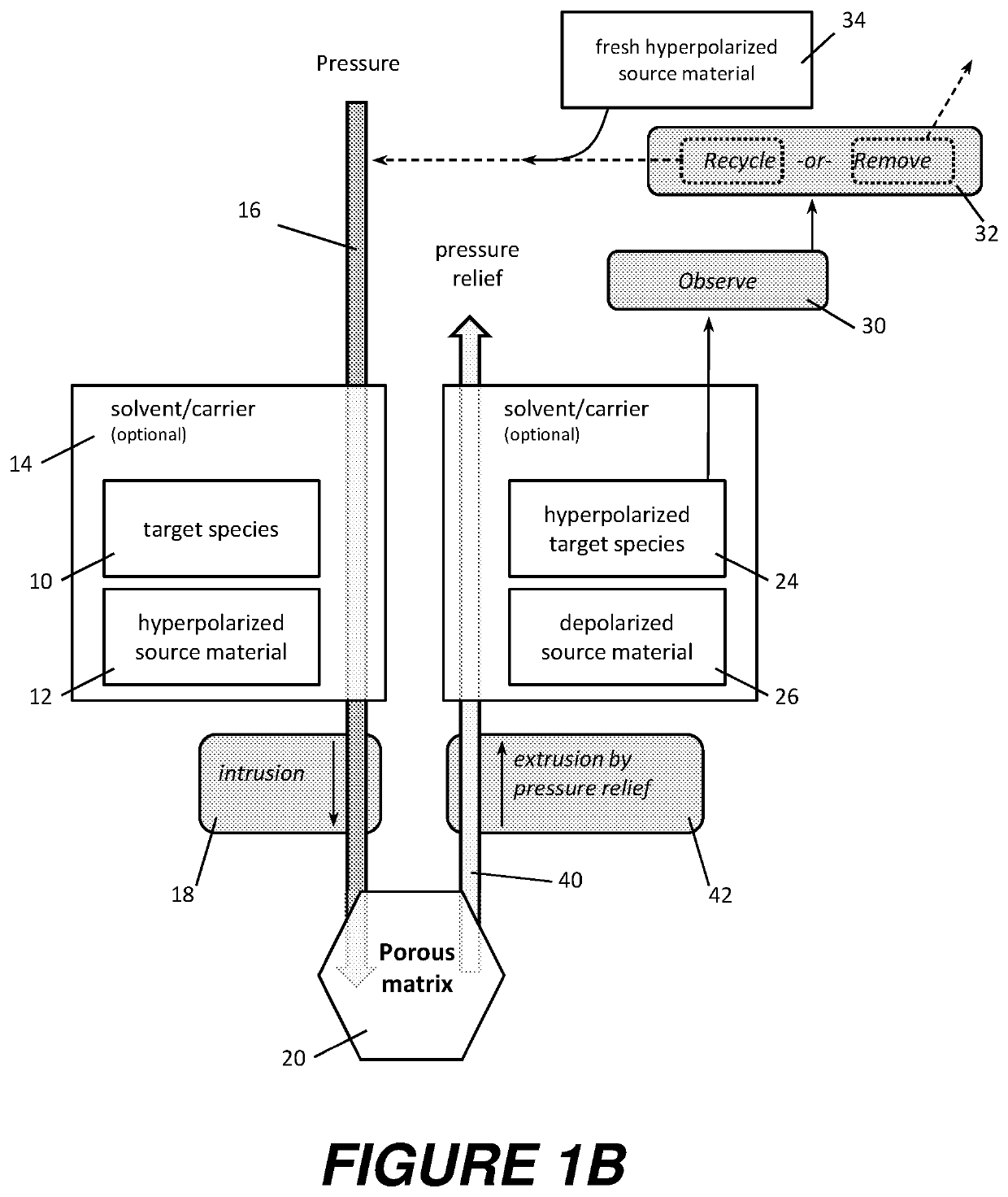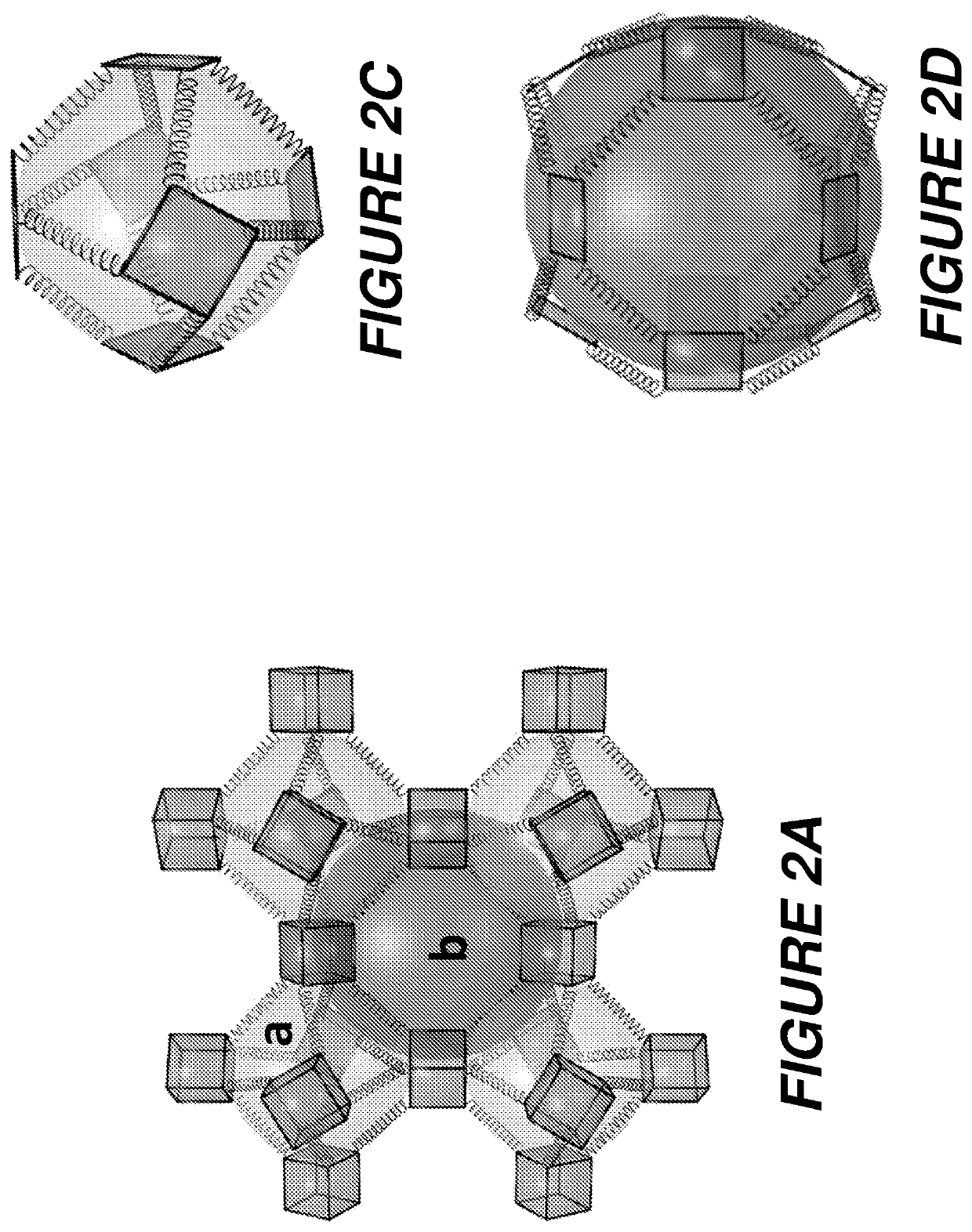Nuclear spin hyperpolarization in a porous matrix
a porous matrix and nuclear spin technology, applied in the field of magnetic resonance analysis of sample materials, can solve the problems of limiting the application of processes, measuring nmr signals, and low signal strength, and achieve enhanced spin polarization, enhanced nuclear spin polarization of target molecules, and increased the magnitude of the magnetic resonance signal of target molecules
- Summary
- Abstract
- Description
- Claims
- Application Information
AI Technical Summary
Benefits of technology
Problems solved by technology
Method used
Image
Examples
Embodiment Construction
>[0022]In the present disclosure, the terms ‘nanopores’ and ‘nanoporous’ are used to describe walled, caged or windowed enclosures, recesses or channels within a material, in which one or more bounded dimension is in the range of 1 to 1000 nanometers (nm). This range itself encompasses a variety of pore sizes by classical definition [see, e.g., Pure and Applied Chemistry, Vol. 66, No. 8, pp. 1739-58 (1994)], including those termed macropores (diameter, D>50 nm), mesopores (D=2-50 nm) and micropores (D<2 nm), and also including confinement in one-dimension, for example between boundaries such as curved or flat material surfaces approaching each other to within <1 micrometer, or confinement in two-dimensions such as within a straight, curved or flexible tube with circular, elliptical, square or irregular cross section that presents one or more directions in which free travel is limited by boundaries at no more than 1 micrometer separation from each other.
[0023]Shown schematically in F...
PUM
| Property | Measurement | Unit |
|---|---|---|
| diameter | aaaaa | aaaaa |
| diameter | aaaaa | aaaaa |
| sizes | aaaaa | aaaaa |
Abstract
Description
Claims
Application Information
 Login to View More
Login to View More - R&D
- Intellectual Property
- Life Sciences
- Materials
- Tech Scout
- Unparalleled Data Quality
- Higher Quality Content
- 60% Fewer Hallucinations
Browse by: Latest US Patents, China's latest patents, Technical Efficacy Thesaurus, Application Domain, Technology Topic, Popular Technical Reports.
© 2025 PatSnap. All rights reserved.Legal|Privacy policy|Modern Slavery Act Transparency Statement|Sitemap|About US| Contact US: help@patsnap.com



